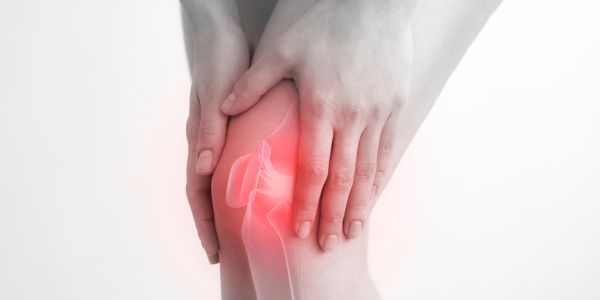Staying safe in the heat

By Cotney Consulting Group.
Working in the heat poses significant risks, but these risks can be managed effectively with proactive measures and a commitment to safety.
Working in the heat on the roof can quickly take a toll. As temperatures rise, so do the risks of heat-related illnesses. Equipping your team with the knowledge and tools is crucial to staying safe in extreme weather conditions. This article will help you recognize the risks of heat-related illness and provide resources, including toolbox talks, to ensure their safety.
Understanding the risks of extreme heat in construction
Roofing contractors often work long hours outdoors, making them particularly vulnerable to heat-related illnesses. As the temperatures increase, so does the risk of heat stress or heat stroke complications.
What is heat stress?
The most common health issue related to summer weather is heat stress. According to the CDC, symptoms of heat stress include exhaustion, cramps and rashes. If you experience any of these symptoms, it's essential to stop working immediately, drink water and move to a shaded or air-conditioned area if possible. Ignoring these symptoms can lead to more severe health issues.
What is heat stroke?
Heat stroke is a more severe and life-threatening form of heat stress that occurs when the body's temperature rises above 103°F. It requires emergency medical treatment. Symptoms of heat stroke include nausea, dizziness, confusion and fainting. If untreated, heat stroke can permanently damage the brain, heart, kidneys and other vital organs.
If a coworker exhibits symptoms of heat stroke, contact 911 immediately. Move the affected person to a cooler area and use water, wet washcloths, ice packs or any other means to lower their temperature while waiting for medical help.
Other risks of high temperatures
While not as serious, normal reactions to high temperatures can pose safety risks on the job site. For instance, sweat can make it more difficult to see or secure tools and materials fatigue can reduce concentration, increasing the likelihood of accidents.
Preventing heat stress and heat stroke
Conducting regular toolbox talks is an effective way to remind workers of the risks associated with heat stress and heat stroke. These brief meetings provide valuable information on staying safe in the heat and can help reinforce safety protocols.
Heat stress toolbox talk
Your toolbox talk should detail the signs and symptoms of heat stress and provide advice for staying cool and hydrated.
Heat stroke toolbox talk
This toolbox talk should explain the seriousness of heat stroke and how to administer first aid. This knowledge can be a lifesaver by ensuring your team knows how to respond quickly and effectively if someone shows signs of heat stroke.
Additional prevention tips
To prevent heat stress and heat stroke on the job site, consider implementing the following practices:
- Provide plenty of breaks: Ensure workers have frequent breaks to rest and cool down, especially on extremely hot days.
- Supply cool water: Make sure fresh water is always available for your crew. Encourage them to stay hydrated throughout the day.
- Enable easy reporting: Establish a straightforward way for field workers to report potential heat-related concerns. Suppose the weather conditions are too extreme or unsafe due to heat. In that case, workers should be able to submit safety observations so that offsite stakeholders can adjust schedules or provide other solutions.
Leveraging technology for heat safety
In addition to traditional methods, leveraging technology can further enhance heat safety protocols on the job site. Here are a few ways technology can help:
- Weather monitoring apps: Utilize weather monitoring apps to keep track of temperature changes and heat indices throughout the day. This allows you to plan work schedules around the hottest parts of the day and make real-time adjustments as needed.
- Wearable technology: Equip workers with wearable technology that monitors their vital signs and alerts them and supervisors to early signs of heat stress. These devices can track heart rate, body temperature and hydration levels.
- Digital safety platforms: Use digital safety platforms to manage and disseminate safety information, schedule toolbox talks and record attendance. These platforms can also facilitate real-time reporting of heat-related concerns and incidents.
The role of supervisors in heat safety
Supervisors play a critical role in implementing and enforcing heat safety measures. Here's how they can make a difference:
- Lead by example: Supervisors should model good heat safety practices, such as taking regular breaks, staying hydrated and using shade.
- Conduct regular check-ins: Supervisors should regularly check in with workers, especially during the hottest parts of the day, to ensure they are not showing signs of heat stress or heat stroke.
- Provide training: Supervisors should ensure all workers are trained on recognizing the symptoms of heat-related illnesses and the steps to take if they or a coworker are affected.
Creating a culture of safety
Creating a culture of safety where workers feel empowered to take care of themselves and each other is crucial. Here are some strategies to build this culture:
- Open communication: Foster an environment where workers feel comfortable reporting safety concerns without fear of retaliation.
- Recognition programs: Recognize and reward workers who consistently follow safety protocols and contribute to a safe working environment.
- Continuous improvement: Regularly review and update safety policies and procedures to reflect the latest best practices and feedback from workers.
Working in the heat poses significant risks, but these risks can be managed effectively with proactive measures and a commitment to safety. Tailgate meetings, proper hydration, regular breaks and the use of technology are all essential components of a robust heat safety program. Supervisors and workers must work together to recognize and mitigate the dangers of heat stress and heat stroke.
Roofing contractors can protect their workforce, maintain productivity, an d create a positive work environment by prioritizing heat safety. Remember, a well-informed and well-prepared team is the best defense against the challenges posed by extreme heat. Stay vigilant, stay safe and ensure every team member goes home healthy at the end of each day.
Learn more about Cotney Consulting Group in their Coffee Shop Directory or visit www.cotneyconsulting.com.





















Comments
Leave a Reply
Have an account? Login to leave a comment!
Sign In